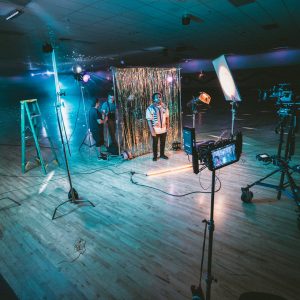With technology discovering new peaks every day, the world is shifting its residence from the physical reality to the virtual. As such, industries have evolved to adapt to this new environment, discovering the limitless possibilities that can be achieved through the virtual expression of one’s imagination. This expression is what animation achieves; it is the ability to bring any visual object to life using motion as an art.
What is 3D Animation?
There are various styles of animation, but 3D animation is currently dominating the arena. 3D Animation is the process through which computer-generated objects are moved using the same principles of motion as real life, making them appear as three-dimensional objects. 3D Animation is developed using 3D software and is an integral part of the world of visual effects. To fully understand and appreciate 3D Animation, we must have a brief understanding of its predecessor – 2D animation.
What is 2D Animation?
2D Animation deals with the movement of objects and characters created in a two-dimensional space, focusing predominantly on the measures of width and height. It can be developed by hand as well as computer software. Although 2D is considered to be a traditional style of animation, it is undeniably making a comeback in the commercial space and will always have a place in the hearts of those who loved the world of cartoon storytelling.
What is the difference between 2D and 3D Animation?
The difference between 2D and 3D Animation can be measured using various factors, but it is crucial to know that one is not better than the other. They are simply two different styles, and each has its own beauty and difficulties.
The fundamental difference between 2D animation and 3D animation can be found in the visual appearance of both styles as well as the medium and process by which they are developed. 2D animation is entirely rendered in two-dimensional space, focusing on the length and width of objects, making their appearance and actions seem flat. On the other hand, 3D animation is made in a three-dimensional space, where characters or models are created with additional measurements of weight giving depth to their appearance and actions, making them seem realistic.
Additionally, in 2D animation several images of characters are drawn with slight changes made in consecutive images, creating a progression of images that create the illusion of movement when played rapidly. On the other hand, 3D models are designed and then put into motion exclusively using 3D animation software.
2D vs 3D Animation Pros and Cons
Commonly asked questions such as “Is 3D animation cheaper than 2D” or “Is 3D animation easier than 2D” prompt us to evaluate the benefits and drawbacks of both techniques.
2D animation is a technique known for its simplicity. It does not use extensive amounts of technology or software and may not always require in-depth tutorials. This contributes to the lower production cost of 2D animation. Its simplicity in creation also allows it to surrender itself entirely to one’s imagination, enjoying an unlimited potential for experimentation.
However, despite its simplicity, its minimal use of technology makes 2D animation an extremely time-consuming and labor-intensive process. It is also currently in low demand as large-scale animation productions often prefer the advantages that accompany the 3D style.
3D animation is widely used for its realistic appearance and visual appeal. It is in popular demand, especially in the film and gaming industries, for its ability to emulate reality. It is not as time-consuming as 2D animation since it works on digital platforms and can re-use 3D models and designs.
Its realistic visual appeal, however, comes with a limited potential to experiment since it strives to make objects and actions appear as real as possible. 3D Animation production costs can also vary depending on the time and resources required by a particular project.
3D Animation at DICE
If the wondrous working of animation appeals to you, DICE offers an extensive 18-month program on 3D Animation and Visual Effects (VFX). Our course specializes in the 3D style and incorporates every aspect from modeling to motion capture to fully understand the process and potential of VFX.
Located in Mumbai, DICE’s 3D Animation course is in collaboration with Vancouver Film School giving you access to an expansive alumni network and industry connections that contributed to milestone moments of animation and VFX. With DICE, you can be a part of the future of animation.










